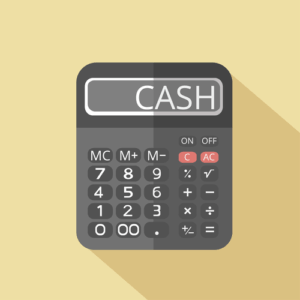
For example, suppose the shares of XYZ Corp. were trading at $20 at the time of the two-for-one split; after the split, the number of shares doubled, and the shares traded at $10 instead of $20. If an investor has 100 shares at $20 for a total of $2,000, after the split, they will have 200 shares at $10 for a total of $2,000. There are some changes that occur as a result of a split that can impact the short position. The biggest change that happens in the portfolio is the number of shares shorted and the price per share.

Ask Any Financial Question

For information pertaining to the registration status of 11 Financial, please contact the state securities regulators for those states in which 11 Financial maintains a registration filing. 11 Financial is a registered investment adviser located in Lufkin, Texas. 11 Financial may only transact business in those states in which it is registered, or qualifies for an exemption or exclusion from registration requirements. 11 Financial’s website is limited to the dissemination of general information pertaining to its advisory services, together with access to additional investment-related information, publications, and links.

Why do companies split their stocks?

In each circumstance, total stockholders’ equity remains the same because there has been neither an increase nor a decrease in the entity’s net assets. The reasoning behind the approach is that it does not alter the total amount of paid-in-capital or retained earnings and thus more clearly reflects the split nature of the stock dividend. Achieving an increase in the number of shares by a formal stock split necessitates a potentially difficult legal process, primarily because the action requires an amendment of the corporate charter granted by the authorities. If the stock undergoes a two-for-one split before the shares are returned, it simply means that the number of shares in the market will double along with the number of shares that need to be returned. When an investor shorts a https://www.bookstime.com/ stock, they are borrowing the shares with the agreement that they will return them at some point in the future.
- The accounting for a stock dividend is based on the form of the transaction rather than its substance.
- Small increases in the number of shares are accomplished through small stock dividends and are distributed in order to provide stockholders with a symbolic return on their investment that does not require a cash distribution.
- The benefit to the shareholders comes about, in theory, because the split creates more attractive opportunities for other future investors to ultimately buy into the larger pool of lower priced shares.
- Each transaction rearranges existing equity, but does not change the amount of total equity.
- Someone on our team will connect you with a financial professional in our network holding the correct designation and expertise.
- For example, if a stock was valued at $15 and there was a 3-for-1 split, each share would now be worth $5.
Create a Free Account and Ask Any Financial Question
However, if this event is a stock dividend, the stock’s par or stated value will not change, but Retained Earnings will decrease and Common Stock will increase. However, when financial statements are issued, the information regarding the stock split and the new par value per share must be disclosed. For example, if a firm’s stock is currently selling for $240 and the firm splits its stock 4 for 1, large stock dividends and stock splits are issued primarily to: the price per share will fall to around $60. Thus, it takes only $6,000 rather than $24,000 to purchase 100 shares. The pizza has 8 slices and costs $16 per pizza which is $2 per share ($16 price / 8 slices). I ask the pizza parlor to double-cut the pizza into 16 slices instead of 8 slices.

Accounting for Stock Splits
Since the corporation’s assets, liabilities, and total stockholders’ equity retained earnings are the same as before the stock split, doubling the number of shares should bring the market value per share down to approximately half of its pre-split value. Since a stock dividend distributable is not to be paid with assets, it is not a liability. In May 2011, Citigroup reverse split its shares 1-for-10 in an effort to reduce its share volatility and discourage speculator trading.
- For example, a stock that is subject to a 3-1 split should see its shares initially cut in third.
- After a split, the stock price will be reduced since the number of shares outstanding has increased.
- The 2-for-1 stock split will cause the quantity of shares outstanding to double and, in the process, cause the market price to drop from $80 to $40 per share.
- Another reason for the price increase is that a stock split provides a signal to the market that the company’s share price has been increasing and people assume this growth will continue in the future, and again, lift demand and prices.
- The day after the stock split, the price had increased to a high of $95.05 to reflect the increased demand from the lower stock price.
- When a company splits its shares, the value of the shares also splits.
- Stock dividends are recorded by moving amounts from retained earnings to paid-in capital.
